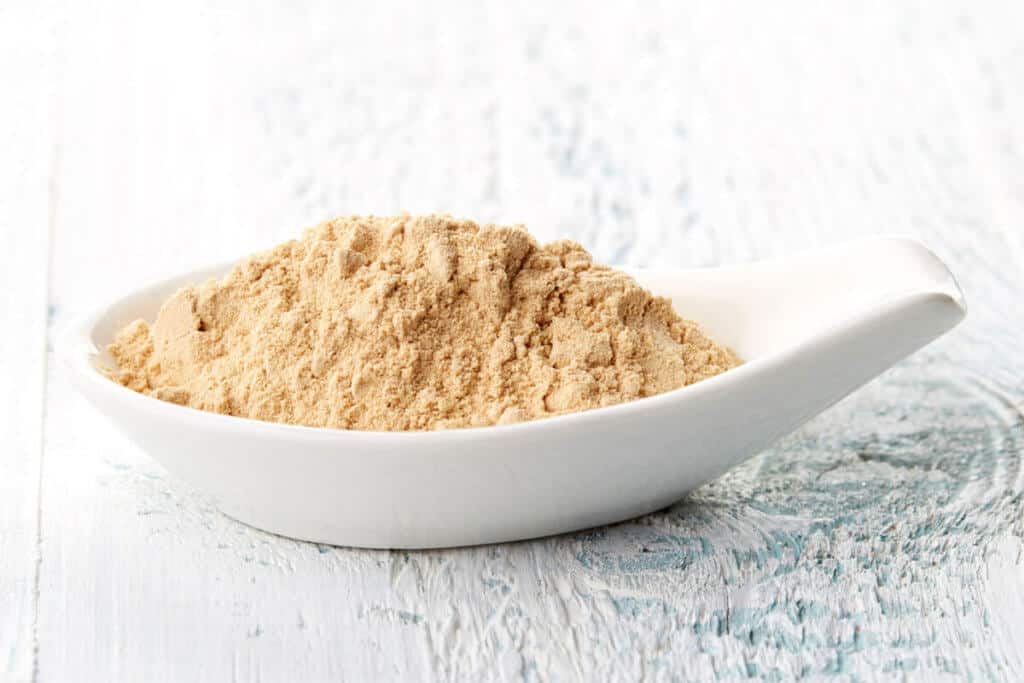What is erectile dysfunction?
Erectile dysfunction (ED) is a condition that is characterized by an altered erectile response, including being unable to achieve or maintain an erection during intercourse. (15) Individuals may experience ED as either a short- or long-term issue. (11) During a healthy erectile response, the central nervous system or peripheral nervous system stimulates the dorsal nerve of the penis. This process involves the nervous, vascular, and endocrine systems. In cases of ED, a number of causes can impair this process, including:- Neurogenic causes, when a psychological or central nervous system issue inhibits vascular reactions
- Arteriogenic causes, when the penis does not adequately fill with blood
- Venogenic causes, when there is a dysfunction of the veno-occlusive system resulting in venous leakage and an incomplete erection (2)

Erectile dysfunction causes and risk factors
A number of causes and risk factors for erectile dysfunction have been identified, including:- Being overweight or obese
- Certain health conditions (e.g., atherosclerosis, type 2 diabetes, chronic kidney disease, anxiety, depression, hypertension) (11)(12)
- Certain medications (e.g., antidepressants, antiandrogens, prescription sedatives, diuretics, antihistamines) (14)
- Excessive alcohol consumption
- Injury to the spinal cord, bladder, pelvis, or penis
- Physical inactivity
- Psychological issues relating to sex (e.g., low self-esteem, stress about sexual performance)
- Smoking and recreational drug use (9)(11)
Signs, symptoms, and complications
The signs and symptoms of erectile dysfunction include:- Complete inability to develop an erection
- Erections that do not last long during intercourse
- Inability to develop an erection when intercourse is desired (11)
Supplement ingredients for men’s sexual health
Medical treatment currently focuses on relieving erectile dysfunction symptoms, (1) and includes pharmaceutical medication, penile prosthesis implantation, and intra-penile therapies. (9)(16) Integrative treatment of erectile dysfunction may involve reducing alcohol intake, quitting smoking, managing weight, attending counseling, (11) and incorporating certain dietary supplements. The evidence-based botanical herbs used in the following protocol have been associated with improved sexual function in men with ED.
Korean ginseng (Panax ginseng)
Panax ginseng, commonly known as Korean or Asian ginseng, has a long history of general therapeutic use in Asian countries. (13) Its primary active component, ginsenosides, have been shown to exert antioxidant, immunostimulatory, hepatoprotective, cardioprotective, and anti-fatigue effects. Ginsenosides may increase the synthesis of nitric oxide (NO), which plays a role in relaxing smooth muscle cells of the corpus cavernosum, a column that forms part of the penis and contains blood vessels that fill with blood during penile erection. (10) Korean ginseng may exert its effects in ED as a result of its ability to improve psychomotor performance, such as processing and reaction time, as well as through inhibitory and stimulatory effects on the central nervous system. (4)Tribulus (Tribulus terrestris)
Tribulus, also referred to as puncture vine, is a shrub and botanical herb that grows commonly as a weed in various regions with warm climates. Tribulus contains various phytochemicals, including flavonoids, alkaloids, tannins, glycosides, and saponins. (3) Steroidal saponins, namely protodioscin and protogracillin, have been shown to influence sexual function and fertility. (3)(5) Protodioscin may benefit individuals with ED by increasing the conversion of testosterone, resulting in an increased production of red blood cells and an improvement in blood circulation and sex drive. (3)
Maca (Lepidium meyenii)
Maca, a plant in the brassica (mustard) family, is native to Peru and grows at an altitude of approximately 4,000 to 4,500m in the Andes mountains. (6) The maca root, which provides iodine, iron, magnesium, and amino acids, is the part of the herb traditionally used for enhancing fertility. (16) Maca is generally considered an adaptogen and has been shown to increase energy and reduce symptoms of depression and anxiety. Maca may improve male sexual health by increasing sperm count, improving sexual desire, and improving the perception of sexual well-being in mild erectile dysfunction. (7)The bottom line
Erectile dysfunction is an important condition to discuss as it impacts quality of life and may be an indicator of other health conditions. The evidence-based ingredients in this protocol may help to improve sexual function and desire. A protocol using natural supplements can be used therapeutically on its own or as an adjunct to existing erectile dysfunction treatment plan. If you’re a patient, we recommend speaking with your healthcare provider to find out whether these supplements are right for your wellness plan. If you’re a practitioner, view our men’s sexual health protocol.- American Urological Association. (2018). Erectile dysfunction: AUA guideline (2018). Retrieved from https://www.auanet.org/guidelines-and-quality/guidelines/erectile-dysfunction-(ed)-guideline.
- Baumann, F., Hehli, D., Makaloski, V., Schumacher, M., Schönhofen, H., & Diehm, N. (2017). Erectile dysfunction – Overview from a cardiovascular perspective. Vasa, 46(5), 347–353.
- Chhatre, S., Nesari, T., Somani, G., Kanchan, D., & Sathaye, S. (2014). Phytopharmacological overview of Tribulus terrestris. Pharmacognosy Reviews, 8(15), 45–51.
- de Andrade, E., de Mesquita, A. A., Claro, J. de A., de Andrade, P. M., Ortiz, V., Paranhos, M., & Srougi, M. (2007). Study of the efficacy of Korean red ginseng in the treatment of erectile dysfunction. Asian Journal of Andrology, 9(2), 241-4.
- Din, S. F. G., Salam, M. A. A., Mohamed, M. S., Ahmed, A. R., Motawaa, A. T., Saadeldin, O. A., & Elnabarway, R. R. (2018). Tribulus terrestris versus placebo in the treatment of erectile dysfunction and lower urinary tract symptoms in patients with late-onset hypogonadism: A placebo-controlled study. Urologia Journal, 86(2), 74–78.
- Gonzales, G. F., Cordova, A., Vega, K., Chung, A., Villena, A., Gonez, C., & Castillo, S. (2002). Effect of Lepidium meyenii (maca) on sexual desire and its absent relationship with serum testosterone levels in adult healthy men. Andrologia, 34(6), 367–372.
- Gonzales G. F. (2012). Ethnobiology and ethnopharmacology of Lepidium meyenii (maca), a plant from the Peruvian highlands. Evidence-Based Complementary and Alternative Medicine, 2012, 193496.
- Hoesl, C., Woll, E., Burkart, M., & Altwein, J. (2005). Erectile dysfunction (ED) is prevalent, bothersome and underdiagnosed in patients consulting urologists for benign prostatic syndrome (BPS). European Urology, 47(4), 511–517.
- Jang, D. J., Lee, M. S., Shin, B. C., Lee, Y. C., & Ernst, E. (2008). Red ginseng for treating erectile dysfunction: A systematic review. British Journal of Clinical Pharmacology, 66(4), 444–450.
- Kim, T. H., Jeon, S. H., Hahn, E. J., Paek, K. Y., Park, J. K., Youn, N. Y., & Lee, H. L. (2009). Effects of tissue-cultured mountain ginseng (Panax ginseng CA Meyer) extract on male patients with erectile dysfunction. Asian Journal of Andrology, 11(3), 356–361.
- National Institute of Diabetes and Digestive and Kidney Diseases. (n.d.). Erectile dysfunction (ED). Retrieved from https://www.niddk.nih.gov/health-information/urologic-diseases/erectile-dysfunction.
- Nunes, K. P., Labazi, H., & Webb, R. C. (2012). New insights into hypertension-associated erectile dysfunction. Current Opinion in Nephrology and Hypertension, 21(2), 163–170.
- So, S. H., Lee, J. W., Kim, Y. S., Hyun, S. H., & Han, C. K. (2018). Red ginseng monograph. Journal of Ginseng Research, 42(4), 549–561.
- U.S. National Library of Medicine. (n.d.). Drugs that may cause erection problems. Retrieved from https://medlineplus.gov/ency/article/004024.htm.
- Yafi, F. A., Jenkins, L., Albersen, M., Corona, G., Isidori, A. M., Goldfarb, S., … Hellstrom, W. J. (2016). Erectile dysfunction. Nature Reviews Disease Primers, 2, 16003.
- Zenico, T., Cicero, A. F. G., Valmorri, L., Mercuriali, M., & Bercovich, E. (2009). Subjective effects of Lepidium meyenii (Maca) extract on well-being and sexual performances in patients with mild erectile dysfunction: A randomised, double-blind clinical trial. Andrologia, 41(2), 95–99.





